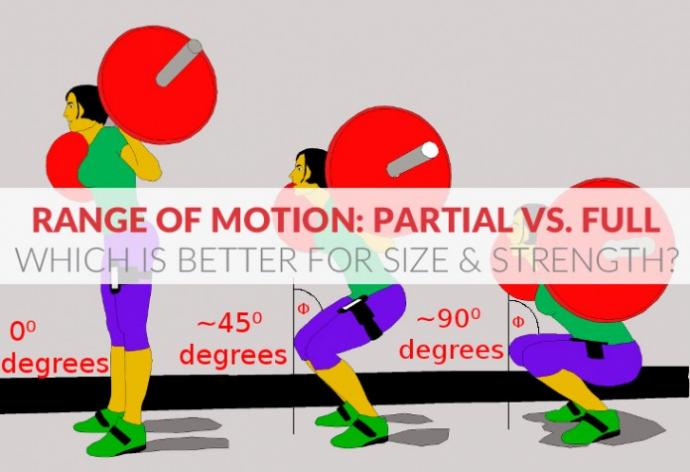
Admit it guys and girls, we're all guilty of it. There has been a time in most of our lifting careers when ego has got the better of us and we\'ve favoured the weight over the technique. I'm outright here to admit I was one for sure. At the start of my lifting career, I only lifted using short/partial range of motion (ROM). I remember my first ever weight training book by Pete Sisco & John Little, called Power Factor Training - A scientific approach to building lean muscle mass. It was a book and a system developed around the method of using partial reps to train a muscle in a shortened state for maximum hypertrophy. I saw the word 'scientific' and so thought it must be gospel! Unbeknown to me about the real science behind proper lifting techniques and muscle hypertrophy.
However, since then 11 years have passed and I've grown wiser of the lifting community. Developing a greater understanding, knowledge and application of examining the bro-science against the actual science. So, when I was clearing up tonight I stumbled across my old Power Factor Training book which ignited an unanswered question. Does working a muscle in its shortened range of motion (aka partial reps) have any greater benefit on a muscles size & strength over a full range of motion?
Well, let's take a look at the evidence for a moment...
Due to the greater difficulty in measuring muscular cross-sectional area (size/strength at its largest point) over a long-term period, there are very few studies comparing the results between short ROM over full ROM however, here are the ones I dug out.
The first long-term study (12-weeks) compared the effects of parallel and quarter squats over full range back squats. Their findings showed that full range back squats produced higher increases in quadriceps muscle cross-sectional area than a quarter squat. (Raastad, 2008)
In 2012, a 10-week study [1] evaluated strength and muscle gain differences between full ROM and partial ROM when performing preacher curls (see figure 3). Researchers asked the 40 untrained males to perform preacher curls twice per week for 10-weeks. One group lifted the weight from 0 to 130 degrees (full ROM) whilst the second groups lifted the weight from 50 to 100 degrees (partial ROM). At the end of the 10-weeks the researchers discovered the following results:
• The full ROM group increased bicep thickness by 9.52%.
• The partial ROM group increased bicep thickness by 7.37%.
However, the difference between hypertrophy of the two groups was not significant.
In 2013 Bloomquist and his researchers compared the effects of partial ROM (0-60 degrees) and full ROM (0-120 degrees) on thigh muscle cross-sectional area when performing a back squat.Both groups were asked to do 3-4 sets of 3-10 reps both to failure and then not to failure. Their results found the group who performed full ROM increased total quad muscle cross-sectional area across the entire sites of the quadriceps, whereas the partial ROM group only saw increases across two heads of the quadriceps and at the most proximal sites - the site nearest the hip. Additionally the full ROM groups also noticed a greater muscle cross-sectional area at the back of the thigh (hamstrings) than the group who performed partial reps [2].
Lastly, another study done in 2012 by McMahon looked at partial ROM vs. full ROM on three knee extension exercises using 80% of 1RM on the squat, leg press and leg extension. The researchers found that the vastus lateralis muscle cross-sectional area increased significantly in both groups. They also noted the full ROM group displayed greater relative gains in the vastus lateralis muscle cross-sectional area compared to the partial ROM group. However, the difference between groups was only significant at the end of the 8-weeks, with the full ROM group displaying a 15% increase compared to the partial ROM group, showing only a 10% increase in the muscles size and strength [3].
While the research is still limited in this area it does seem that working a muscle across its full ROM is more beneficial to its size and strength than working it across a partial range. Nevertheless, it's not to say one should forget partial work all together; after all it can be a great tool in overcoming 'sticking points' in a lift. However, I do believe ROM should be dictated by exercise type, individual lever length and training outcomes. It should not be dictated by weight, a hungry ego or some pseudoscience you've read in a fancy book!

